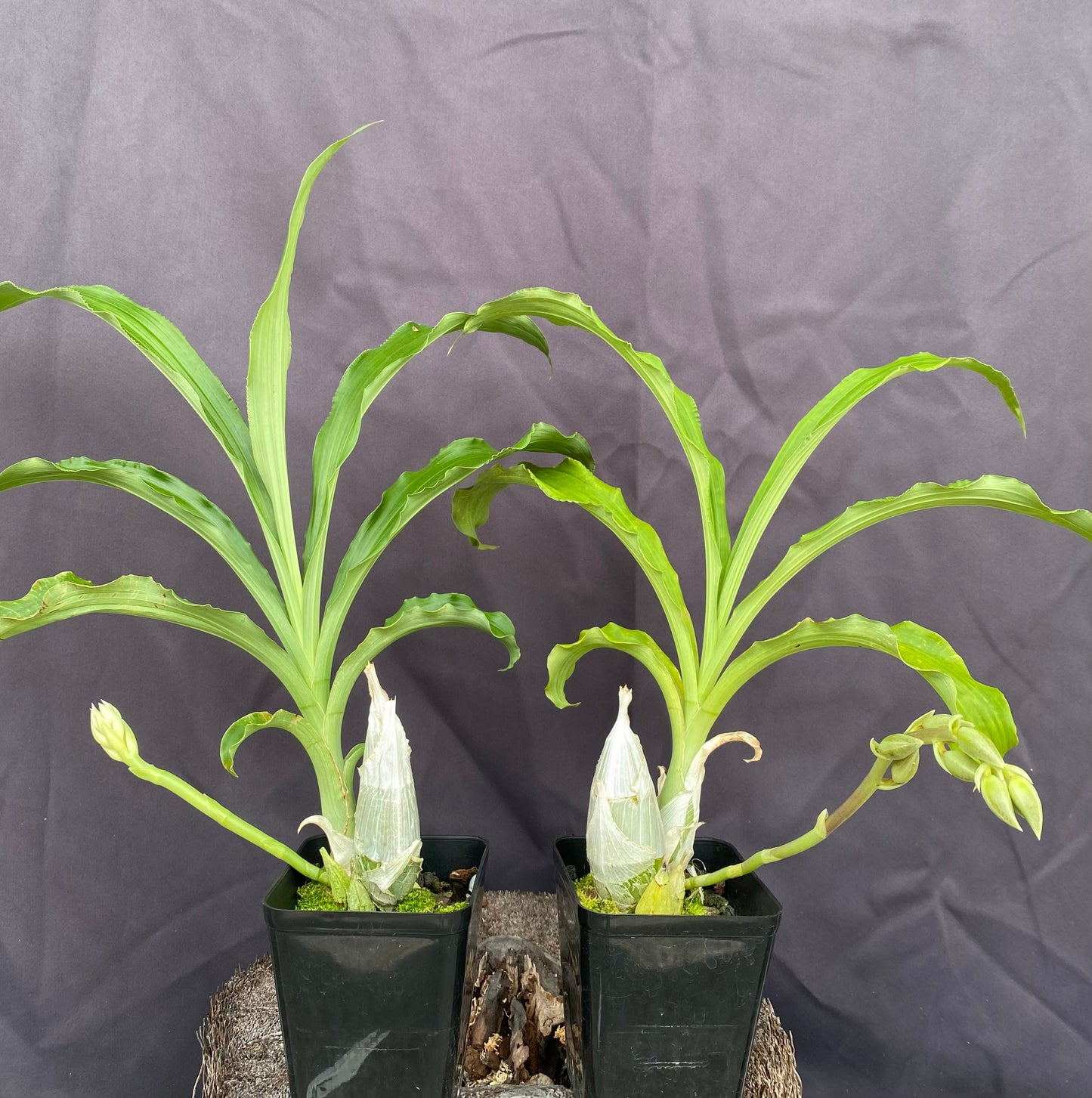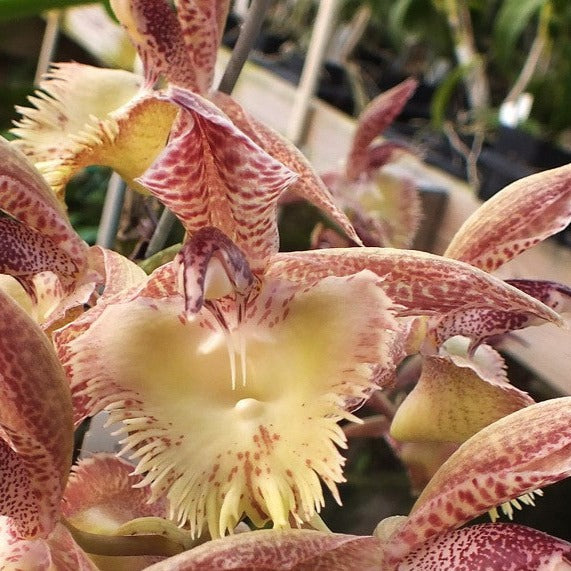Kalapana Orchid Farm
Ctsm. 'Frilly Doris'
Ctsm. 'Frilly Doris'
Couldn't load pickup availability
The Catasetum Frilly Doris is a fascinating hybrid, registered by F. Clarke in 2002, that truly earns its name with its wonderfully ornate blooms. It’s a cross between Catasetum Doris's Choice and Catasetum Donna Marie. Now, to understand the "why" behind those frills, we need to trace the lineage further back to the species that give this hybrid its unique characteristics:
Catasetum Doris's Choice is a complex hybrid itself, tracing back to several species, but notably includes Catasetum pileatum, known for its large, flat, and often fimbriated (frilly) lips. Ctsm. pileatum is native to Venezuela, Colombia, and Trinidad, growing as an epiphyte in seasonally dry tropical forests at low elevations. It experiences warm temperatures and a distinct dry season.
Catasetum Donna Marie is also a multi-generational hybrid, and its influence contributes to the overall vigor and floriferousness of 'Frilly Doris'.
Catasetums, as a genus, are quite remarkable for their unique growth cycle and often fascinating flower mechanics, sometimes even "shooting" pollen. 'Frilly Doris' is no exception, bringing a touch of playful drama to its presentation.
The flowers of Catasetum Frilly Doris are typically around 3 to 4 inches across and are indeed notable for their pronounced frilly edges on the petals and sepals. The color palette usually features a base of cream to bright yellow, heavily adorned with intricate burgundy to maroon spots and freckles. The lip, often the most striking feature, is similarly patterned and can have a deeply fimbriated or ruffled margin, adding to its "frilly" appeal. Many clones are also pleasantly fragrant, often with a sweet, lemony, or clean citrus scent that is most noticeable in the morning. This hybrid is known for being floriferous, producing multiple upright spikes that can carry a good number of blooms.
Botanically, Catasetum Frilly Doris is a deciduous orchid. It develops stout, succulent pseudobulbs, which are designed to store water and nutrients during its dormant period. During the active growing season, it produces broad, strappy, plicate (pleated) leaves that can reach lengths of 10 to 15 inches. As the growing season progresses and the pseudobulbs mature, the leaves will naturally yellow and drop off, signaling the approach of dormancy. The flower spikes emerge from the base of the mature pseudobulbs, often appearing as the leaves begin to drop or after they have completely fallen, typically in late summer to fall, but can bloom multiple times a year under ideal conditions.
Care Instructions:
Light: Provide bright light, similar to what a Cattleya enjoys. Direct morning sun is beneficial, but protect from harsh midday sun, especially in warmer climates, to prevent leaf burn.
Water: Water heavily and frequently during the active growing season (when new roots and leaves are developing), allowing the media to dry slightly between waterings. Reduce watering significantly as leaves yellow and drop, entering dormancy. During dormancy, watering should cease almost entirely; only provide a very light misting or a small sip of water if pseudobulbs begin to shrivel severely. Resume regular watering when new growth and roots are actively emerging in the spring.
Temperature: This orchid prefers warm temperatures. Day temperatures should range from 80°F to 100°F during the growing season, with night temperatures around 65°F to 75°F. During dormancy, temperatures can be slightly cooler, but should not drop below 55°F.
Humidity: Maintain moderate to high humidity, ideally between 40% and 70% during the growing season. Good air circulation is critical, especially with higher humidity, to prevent fungal issues.
Potting Medium: Use a well-draining, moisture-retentive mix. Fir bark mixed with perlite, charcoal, or even sphagnum moss for smaller pots works well. Repot when new growth and roots appear, typically annually, as the media can break down quickly with heavy watering. Catasetums generally prefer to be slightly underpotted.
Please note: As with all deciduous orchids, your Ctsm. Frilly Doris will lose its leaves and enter dormancy in winter while the energy is directed into forming new pseudobulbs and eventually flower spikes. Reduce watering during dormancy.
Grown in 4" pots, with some spiking. Available in very limited supply.
Share








